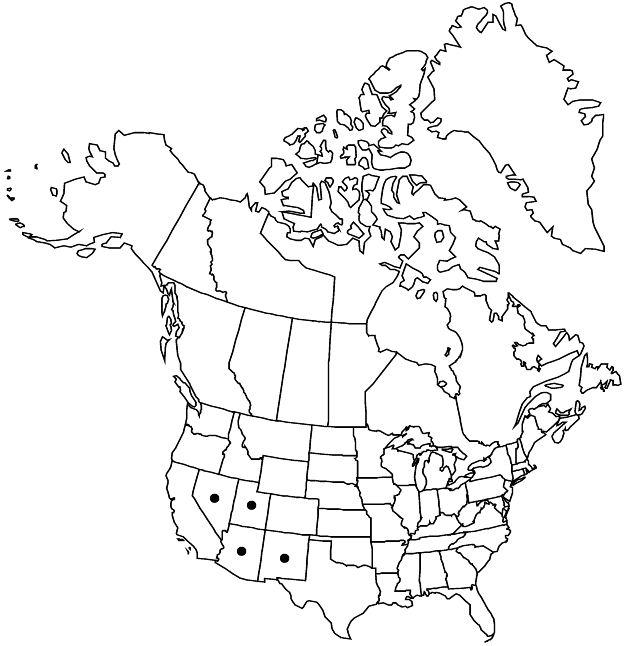Difference between revisions of "Linum subteres"
in H. G. A. Engler et al., Nat. Pflanzenfam. ed. 2, 19a: 116. 1931.
FNA>Volume Importer |
imported>Volume Importer |
||
| (6 intermediate revisions by 2 users not shown) | |||
| Line 1: | Line 1: | ||
{{Treatment/ID | {{Treatment/ID | ||
|accepted_name=Linum subteres | |accepted_name=Linum subteres | ||
| − | |accepted_authority=(Trelease) H. J. P. Winkler | + | |accepted_authority=(Trelease) H. J. P. Winkler |
|publications={{Treatment/Publication | |publications={{Treatment/Publication | ||
| − | |title=Nat. Pflanzenfam. ed. | + | |title=in H. G. A. Engler et al., Nat. Pflanzenfam. ed. |
|place=2, 19a: 116. 1931 | |place=2, 19a: 116. 1931 | ||
|year=1931 | |year=1931 | ||
| Line 12: | Line 12: | ||
|label=Endemic | |label=Endemic | ||
}} | }} | ||
| − | |basionyms={{Treatment/ID/ | + | |basionyms={{Treatment/ID/Basionym |
|name=Linum aristatum var. subteres | |name=Linum aristatum var. subteres | ||
| − | |authority=Trelease in A. Gray et al. | + | |authority=Trelease |
| + | |rank=variety | ||
| + | |publication_title=in A. Gray et al., Syn. Fl. N. Amer. | ||
| + | |publication_place=1(1,2): 347. 1897 | ||
}} | }} | ||
|synonyms={{Treatment/ID/Synonym | |synonyms={{Treatment/ID/Synonym | ||
|name=L. leptopoda | |name=L. leptopoda | ||
|authority=A. Nelson | |authority=A. Nelson | ||
| + | |rank=species | ||
}} | }} | ||
|hierarchy=Linaceae;Linum;Linum sect. Linopsis;Linum subteres | |hierarchy=Linaceae;Linum;Linum sect. Linopsis;Linum subteres | ||
| Line 34: | Line 38: | ||
|elevation=1300–2200 m. | |elevation=1300–2200 m. | ||
|distribution=Ariz.;Nev.;N.Mex.;Utah. | |distribution=Ariz.;Nev.;N.Mex.;Utah. | ||
| − | |discussion=<p>Linum subteres is most closely related to L. vernale; it has lemon yellow petals, rather than orange to salmon-colored with a maroon base, and relatively thick, crowded, broad basal leaves (C. M. Rogers 1984). Leaves on the proximal half of each stem are closely spaced and imbricate; distal branches and inflorescence are widely spaced and subtended by closely appressed, relatively long, narrow leaves or bracts, giving the upper part of the plant a leafless look.</p> | + | |discussion=<p><i>Linum subteres</i> is most closely related to <i>L. vernale</i>; it has lemon yellow petals, rather than orange to salmon-colored with a maroon base, and relatively thick, crowded, broad basal leaves (C. M. Rogers 1984). Leaves on the proximal half of each stem are closely spaced and imbricate; distal branches and inflorescence are widely spaced and subtended by closely appressed, relatively long, narrow leaves or bracts, giving the upper part of the plant a leafless look.</p> |
|tables= | |tables= | ||
|references= | |references= | ||
| Line 43: | Line 47: | ||
-->{{#Taxon: | -->{{#Taxon: | ||
name=Linum subteres | name=Linum subteres | ||
| − | + | |authority=(Trelease) H. J. P. Winkler | |
| − | |authority=(Trelease) H. J. P. Winkler | ||
|rank=species | |rank=species | ||
|parent rank=section | |parent rank=section | ||
| Line 55: | Line 58: | ||
|distribution=Ariz.;Nev.;N.Mex.;Utah. | |distribution=Ariz.;Nev.;N.Mex.;Utah. | ||
|reference=None | |reference=None | ||
| − | |publication title=Nat. Pflanzenfam. ed. | + | |publication title=in H. G. A. Engler et al., Nat. Pflanzenfam. ed. |
|publication year=1931 | |publication year=1931 | ||
|special status=Endemic | |special status=Endemic | ||
| − | |source xml=https:// | + | |source xml=https://bitbucket.org/aafc-mbb/fna-data-curation/src/2e0870ddd59836b60bcf96646a41e87ea5a5943a/coarse_grained_fna_xml/V12/V12_501.xml |
|genus=Linum | |genus=Linum | ||
|section=Linum sect. Linopsis | |section=Linum sect. Linopsis | ||
Latest revision as of 19:15, 5 November 2020
Herbs, annual or perennial, 15–50 cm, glabrous and glaucous. Stems stiffly spreading-ascending, branched at base and distal to middle. Leaves alternate or proximalmost opposite, crowded at base, appressed-ascending; stipular glands absent; blade oblanceolate to lanceolate or linear-lanceolate, 8–17 × 1.2–2.3 mm, margins entire, not ciliate, apex apiculate. Inflorescences few-flowered racemes. Pedicels (5–)20–30(–60) mm. Flowers: sepals persistent, lanceolate to lance-ovate, 4.5–7 mm, margins narrowly scarious, inner sepals conspicuously toothed, outer ones very coarsely glandular-toothed, sometimes sparsely so, apex acuminate or narrowly acute; petals lemon yellow, obovate, 9–15 mm; stamens 5–7 mm; anthers 1–2 mm; staminodia absent; styles connate to within 0.8–3 mm of apex, 5.7–9 mm; stigmas capitate. Capsules ovoid (distinctly longer than broad), 3.5–4.6 × 2.5–3.1 mm, apex sharp-pointed, dehiscing completely into 5, 2-seeded segments (very easily crushed), segments persistent on plant, false septa incomplete, proximal margins terminating in loose fringe, cartilaginous plates at base of segments poorly developed. Seeds 2.5–3 × 0.9–1.2 mm. 2n = 30.
Phenology: Flowering May–Aug.
Habitat: Sandy soils, clay, sagebrush and pinyon-juniper zones.
Elevation: 1300–2200 m.
Distribution

Ariz., Nev., N.Mex., Utah.
Discussion
Linum subteres is most closely related to L. vernale; it has lemon yellow petals, rather than orange to salmon-colored with a maroon base, and relatively thick, crowded, broad basal leaves (C. M. Rogers 1984). Leaves on the proximal half of each stem are closely spaced and imbricate; distal branches and inflorescence are widely spaced and subtended by closely appressed, relatively long, narrow leaves or bracts, giving the upper part of the plant a leafless look.
Selected References
None.